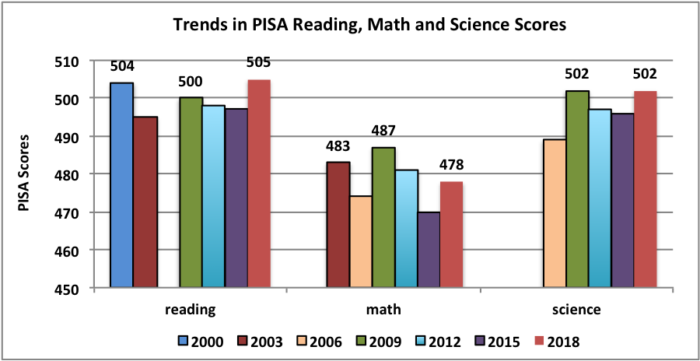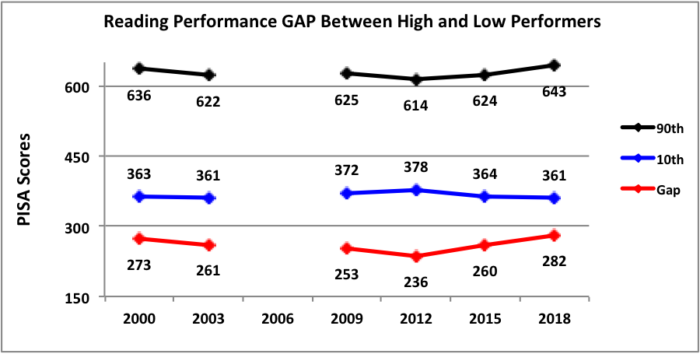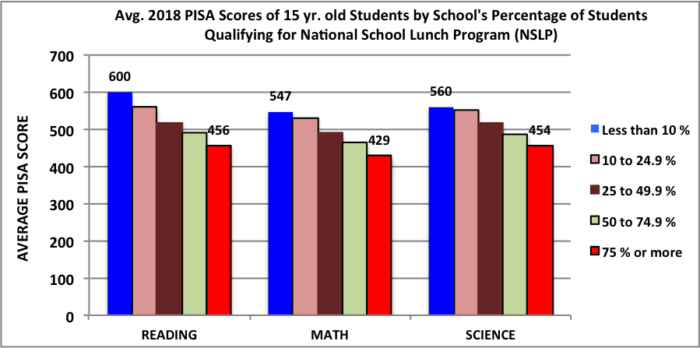Author Archives for Jack States
January 15, 2020 12:36 pm
Published by Jack States
Does School Spending Matter? The New Literature on an Old Question. The impact of school finances on student achievement has long interested educators. Research conducted before the mid-1990s suggested a link between the available resources provided schools and student outcomes, but much of this research is correlational. Because correlational research cannot imply causation, studies of a more rigorous nature are needed if policymakers are to redesign school financing that predictably maximizes learning for all students, regardless of the parent’s socio-economic status. Recently published studies employing larger data-sets and based on quasi-experimental methods offer a clearer understanding of how schools might be better funded. This paper of American United States school finances finds evidence to support the importance of providing equitable funding across school districts. These results have important policy implications and suggest areas for future research.
Citation: Jackson, C. K. (2018). Does school spending matter? The new literature on an old question (No. w25368). National Bureau of Economic Research.
Link: https://pdfs.semanticscholar.org/0fe6/d628994e0fdc26a605cbf13d98929b94bb53.pdf?_ga=2.32626302.115129415.1578943387-1285604847.1578943387
January 15, 2020 11:29 am
Published by Jack States
Overview of Value-Added Research in Education: Reliability, Validity, Efficacy, and Usefulness. Value-added modeling (VAM) is a statistical approach that provides quantitative performance measures for monitoring and evaluating schools and other aspects of the education system. VAM comprises a collection of complex statistical techniques that use standardized test scores to estimate the effects of individual schools or teachers on student performance. Although the VAM approach holds promise, serious technical issues have been raised regarding VAM as a high-stakes instrument in accountability initiatives. The key question remains: Can VAM scores of standardized test scores serve as a proxy for measuring teaching quality? To date, research on the efficacy of VAM is mixed. There is a body of research that supports VAM, but there is also a body of studies suggesting that model estimates are unstable over time and subject to bias and imprecision. A second issue with VAM is the sole use of standardized tests as a measure of student performance. Despite these valid concerns, VAM has been shown to be valuable in performance improvement efforts when used cautiously in combination with other measures of student performance such as end-of-course tests, final grades, and structured classroom observations.
Citation: Cleaver, S., Detrich, R. & States, J. (2020). Overview of Value-Added Research in Education: Reliability, Validity, Efficacy, and Usefulness. Oakland, CA: The Wing Institute. https://www.winginstitute.org/staff-value-added.
Link: https://www.winginstitute.org/staff-value-added
January 15, 2020 11:22 am
Published by Jack States
Trend in High School Dropout and Completion Rates in the United States: 2018. This report provides the most recent year of data available for each dropout and completion rate, summarizes long-term trends, and examines the characteristics of high school dropouts and completers. Five rates are presented to provide a broad perspective on high school dropouts and completers in the United States: the event dropout rate, the status dropout rate, the status completion rate, the adjusted cohort graduation rate, and the averaged freshman graduation rate. The report also provides information about individuals who completed an alternative high school credential.
Citation: McFarland, J., Cui, J., Rathbun, A., and Holmes, J. (2019). Trend in High School Dropout and Completion Rates in the United States:2018. National Center for Education Statistics. NCES 2019-117 US Department of Education.
Link: https://nces.ed.gov/pubs2019/2019117.pdf
January 15, 2020 11:20 am
Published by Jack States
What to Make of Declining Enrollment in Teacher Preparation Programs. This policy report provides a look at the decline in the enrollment of American teacher preparation programs, along with potential consequences for schools and the students they serve. The analysis offers education policymakers with insight into the complex issues involved in maintaining sufficient numbers of qualified teachers. While enrollment in teacher preparation programs has declined by more than one-third since 2010, the analysis described in this report paints a more complex and nuanced picture than the national numbers portray. The study finds significant variations among states in the change in enrollment in teacher preparation programs.
Citation: Partelow, L. (2019). What to Make of Declining Enrollment in Teacher Preparation Programs. Center for American Progress. https://www.americanprogress.org/issues/education-k-12/reports/2019/12/03/477311/make-declining-enrollment-teacher-preparation-programs/
Link: https://www.americanprogress.org/issues/education-k-12/reports/2019/12/03/477311/make-declining-enrollment-teacher-preparation-programs/
January 7, 2020 9:30 am
Published by Jack States
School Principal Competencies. Research has consistently shown that principals play a critical role in determining the quality of teaching, and in turn, student learning and achievement. Recent meta-analytic reviews suggest that effective principals are highly competent in the following areas: 1) establishing and conveying the school’s vision, goals and expectations by modeling aspirational practices and promoting data use for continuous improvement; 2) building teachers’ professional capacity by providing targeted and job-embedded professional development, protecting instructional time, and selecting educators who are the “right fit” for the school; 3) creating a supportive organization for learning by sharing and distributing leadership, understanding and building on diversity, and strategically acquiring and allocating resources; 4) facilitating a high-quality student learning experience by developing and monitoring curriculum, instruction, and assessment, and creating learning environments that are personalized, safe, and orderly; and 5) connecting with external partners who can support fulfillment of school goals, and building productive and collaborative relationships with families. While these principal competencies are relevant for a range of school contexts, leaders operating in varying school environments (e.g., high/low poverty, urban/rural) must ultimately determine how best to enact them to optimize teaching and learning.
Citation: Donley, J., Detrich, R., States, J., & Keyworth, (2020). Principal Competencies. Oakland, CA: The Wing Institute. https://www.winginstitute.org/principal-competencies-research
Link: https://www.winginstitute.org/principal-competencies-research
December 17, 2019 12:49 pm
Published by Jack States
Practice Outpacing Policy? Credit Recovery in American School Districts. Traditionally, students who failed classes could get credit by taking the class over during summer school. In a relatively brief period of time, most high schools have a undergone a complete and rapid transformation in this area, shifting to “credit recovery” programs to help at-risk students earn credits towards graduation for classes they have failed. These programs typically offer online alternatives to students rather than having them retake the failed class. In the 2015-16 school year approximately three out of four high schools offered credit recovery programs with about 6% of all students participating. This growth in credit recovery programs, rapid expansion of new online models, and numerous cases of misuse to inflate graduation rates highlight the need for research into the implementation and effectiveness of this intervention.
This study examined the policies and practices of a representative sample of high schools to identify how they structure their credit recovery programs. It found: Over 95% of the credit recovery program had online components (58% online with some in-person instruction, 37% were exclusively online). Seventy-eight percent used just one online credit recovery provider to manage their system. Eighty-seven percent of districts offer credit recovery programs year-round. Forty percent of the districts limited credit recovery to courses
Traditionally, students who failed classes could get credit by taking the course over during summer school. In a relatively brief time, most high schools have undergone a complete and rapid transformation in this area, shifting to “credit recovery” programs to help at-risk students earn credits towards graduation for classes they have failed. These programs typically offer online alternatives to students rather than having them retake the failed class. In the 2015-16 school year, approximately three out of four high schools offered credit recovery programs with, about 6% of all students participating. This growth in credit recovery programs, a rapid expansion of new online models, and numerous cases of misuse to inflate graduation rates highlight the need for research into the implementation and effectiveness of this intervention
This study examined the policies and practices of a representative sample of high schools to identify how they structure their credit recovery programs. It found: Over 95% of the credit recovery program had online components (58% online with some in-person instruction, 37% were exclusively online). Seventy-eight percent used just one online credit recovery provider to manage their system. Eighty-seven percent of districts offer credit recovery programs year-round. Forty percent of the districts limited credit recovery to courses required for graduation. Only 16% limited the option to twelfth graders, allowing students from all high school grades to avail themselves of the option. The study concluded that “many districts’ policies allow lots of flexibility for student access and assessment with relatively little constraint. Taken individually, these policies could be justifiable but taken together, and they leave credit recovery programs ripe for abuse.”
Citation: Malkus, N. (2019). Practice Outpacing Policy? Credit Recovery in American School Districts. American Enterprise Institute.
Web Address: https://www.aei.org/wp-content/uploads/2019/11/Practice-Outpacing-Policy.pdf
December 17, 2019 10:34 am
Published by Jack States
A Review of the Literature on Principal Turnover. When it comes to variables that impact student achievement, school principals consistently come up second, behind teachers. They play a critical role in supporting teachers and students to ensure a school’s success. Hiring and maintaining qualified school principals is as important as it is challenging. Yet, principal turnover remains high, impacting the consistency of services and school improvement efforts.
This paper examines research on what we know about the causes and impact of principal turnover. The author is interested in answering three questions: how principal turnover is defined and measured, identifying the causes of turnover, and understanding the consequences of high rates of turnover. The review of the literature shows that there are insufficient numbers and quality of studies on this topic. The current knowledge base consists of case studies and correlational research. The fact there is a shortage of experimental research is not surprising given challenges confronted in implementing research on principal turnover. Because of this, the author was unable to conduct a meta-analysis for this paper. It appears that principal turnover is closely related to student achievement and teacher turnover, but the research is not sufficient to make definitive conclusions at this time. Snodgrass concludes the field needs additional quality studies on this topic.
Citation: Snodgrass Rangel, V. (2018). A review of the literature on principal turnover. Review of Educational Research, 88(1), 87-124.
Link: https://journals.sagepub.com/doi/pdf/10.3102/0034654317743197
December 16, 2019 2:26 pm
Published by Jack States
On the Reality of Dyslexia. This paper assesses research on the topic of dyslexia. Willingham’s piece is in response to comments made by literacy researcher, Dick Allington, in which he questions the legitimacy of the label, dyslexia. Answering this question is more than an academic exercise as having a clearer understanding of dyslexia is crucial if educators are to understand why 10% of students struggle to master reading, the skill essential to success in academic learning. Willingham highlights the etiology of the disorder, and he concludes that the ability to read is the product of the home environment, instruction at school, and genetics within the child. Dyslexia is a problem in the child’s ability to successfully master the skills of reading and is closely related to fluency in language. Dyslexia is not like measles in which you are ill, or you aren’t. Dyslexia is more like high blood pressure where individuals fall on a bell curve. Falling somewhere on the bell curve is supported by the hypothesis that the disorder is the complex interaction between multiple causes. Although it does not have a single source, dyslexia is successfully remediated through evidence-based language and reading instruction.
Citation: Willingham, D. (2019). On the Reality of Dyslexia. Charlottesville, VA.http://www.danielwillingham.com/daniel-willingham-science-and-education-blog/on-the-reality-of-dyslexia?utm_source=feedburner&utm_medium=email&utm_campaign=Feed%3A+nbspDanielWillingham-DanielWillinghamScienceAndEducationBlog+%28Daniel+Willingham%27s+Science+and+Education+Blog%29.
Link: On the Reality of Dyslexia
December 16, 2019 2:24 pm
Published by Jack States
PISA 2018 Results (Volume I): What Students Know and Can Do. Benchmark Indicators are critical tools to help education stakeholders track their education system’s performance over time, in comparison to other similar level education systems (state, national, international), and by student groups (ethnicity, disabilities, socioeconomic status, etc.). One of the most respected tools for benchmarking system performance is the Program for International Student Assessment (PISA), which tests 15-year-old-students across nearly 80 countries and educational systems in reading, mathematics, and science. The results from the most recent testing (2018) were just released. The report itself has an enormous amount of data. A summary of key findings follows.
Performance Over Time
U.S. test performance, despite small fluctuations, has been virtually flat over the past twelve to eighteen years (depending on the subject area). The reading performance score was 504 in 2000 and 505 in 2018. Math performance got worse, dropping from 483 in 2003 to 478 in 2018. And science performance has remained the same over the last four testing periods, remaining at 502 between 2009 and 2018. Consistency is not inherently a bad thing depending on how well a system is performing. However, PISA data suggests that the U.S. system is significantly underperforming compared to other international systems (see following). Consistency is also a problem when one considers that unprecedented investments in school reform efforts during this time period (e.g. No Child Left Behind, School Improvement Grants, Race to the Top, and Every Student Succeeds) have failed to move the needle in any significant way.
Performance Compared to Other Countries
U.S performance in reading ranked thirteenth among participating nations in reading, thirty-eighth in math, and twelfth in science. These represent a slight improvement in rankings from the 2015 test results, but that is a reflection of several top performing nations had lower scores, not that the U.S. improved.
Performance Across Different Student Subgroups
One of the biggest takeaway’s from this report is the growing inequity in performance between the high student performers and low. The following chart looks at the average scores of a gap between student scores in the highest percent of academic achievement (90%) and scores at the lowest (10%).
Reading scores of the highest performing students have increased over the lasts two tests from 614 to 643, while the scores of the lowest 10% have decreased from 378 to 361. The result is a widening gap between the top and lowest performing students. While improving the scores of the best performing students is a laudable achievement, an education system must serve all of its students in the interest of equity.
Further analysis of the data shows a correlation between student performance differences and their socioeconomic status (SES). One of the metrics used to determine SES is whether or not students qualify for the National School Lunch Program.
This data shows a direct correlation between a school’s reading scores and the SES of its student body. The more low SES students, the lower the PISA reading, math, and science scores.
It is almost impossible to document cause and effect with data at this level of analysis and control. Still, when making policy and program decisions, we must use the best available evidence. In this case, the best available evidence portrays an education system that, despite significant school improvement efforts, has shown little or no improvement over time, performs worse than a significant number of other nations’ education systems and continues to have inequitable results.
Citation. OECD (2019), PISA 2018 Results (Volume I): What Students Know and Can Do, PISA, OECD Publishing, Paris, https://doi.org/10.1787/5f07c754-en.
Web Address. https://www.oecd.org/pisa/publications/pisa-2018-results-volume-i-5f07c754-en.htm
December 16, 2019 11:39 am
Published by Jack States
Examining racial/ethnic disparities in school discipline in the context of student-reported behavior infractions. Research strongly supports the existence of bias in human beings. Discrepancies between how teachers handle behavior management incidents for students of color and white students has been a concern of education researchers for well over a decade. This paper looks at the disproportionality of consequences for disciplinary infractions between these groups of students. The researchers were interested in determining whether students of color would show similar rates of suspensions, office referrals, personal warnings from a teacher, or warnings about their behavior sent home based on ethnicity, as is the case for white students. Wegman’s study finds that African American students are less likely to receive warnings for behavior infractions than white peers, resulting in escalating consequences for students of color. The unequal handling of disciplinary actions reflects a pressing need for schools to address issues of implicit and explicit bias as a means to address this central issue in education.
Citation: Wegmann, K. M., & Smith, B. (2019). Examining racial/ethnic disparities in school discipline in the context of student-reported behavior infractions. Children and Youth Services Review, 103, 18-27.
Link: https://www.sciencedirect.com/science/article/pii/S0190740918311095



